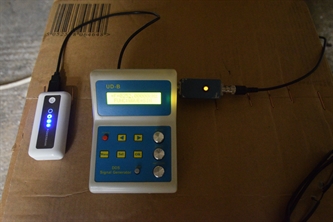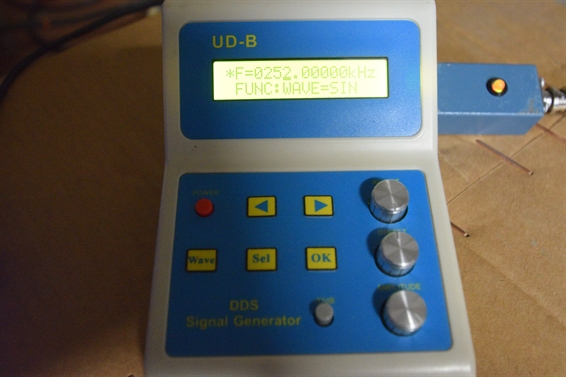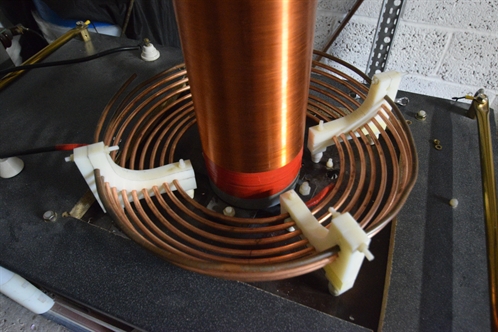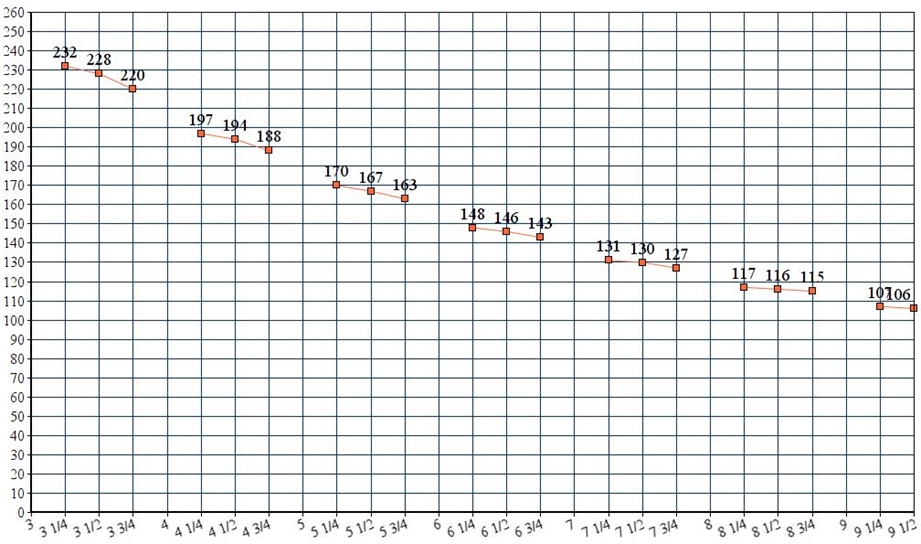Measuring and Tuning
When we talk about tuning a Tesla coil what we are trying to achive is the primary side resonating at the same frequency as the secondary side, so after building our coil we have a fixed capasitor value (something in the order of say 0.018uF) in the primary curcuit, our seconday frequency is set by the secondary coil dimensions (Number of turns, diameter, wire thickness) we then top this off with a captive load (The top load in the form of a toroid).
Our BM7 Tesla coil is 6" dia, wound to a height of 27" and has a resonant frequency of 252KHz this frequency will drop as we add a captive top load.
The avaerage Tesla coil builder will use a primary coil made of 13 turns or there abouts and will have a movable "Tap" point so by moving the tap point around the primary you will find the spot where the two coil resonate so will be in tune.
We have gone about this process by taking measurments of our BM7 coil with ever top load we have and then measuring every 1/4 turn of the primary coil and then recording the frequency.
Too obtain this data we are using a signal generator/tuning kit, the kit was built by a skilled Tesla coil builder some years back but works a treat.
Our BM7 Tesla coil is 6" dia, wound to a height of 27" and has a resonant frequency of 252KHz this frequency will drop as we add a captive top load.
The avaerage Tesla coil builder will use a primary coil made of 13 turns or there abouts and will have a movable "Tap" point so by moving the tap point around the primary you will find the spot where the two coil resonate so will be in tune.
We have gone about this process by taking measurments of our BM7 coil with ever top load we have and then measuring every 1/4 turn of the primary coil and then recording the frequency.
Too obtain this data we are using a signal generator/tuning kit, the kit was built by a skilled Tesla coil builder some years back but works a treat.


This is our signal generator it`s powered by a USB portable power supply, we set the generator to output a sin wave, then the frequency can be scanned through until the LED on the right shows both Green and Red at it`s peak brighness we read off the frequency, the signal generator is wired across the bottom of the secondary and ground.
Below is a table of Frequency`s for our BM7 Tesla coil with all the top loads we have.
|
Coil |
Top load | Frequency (KHz) |
| BM7 | Spun | 154 |
| Medium | 137 | |
| 2 x Spun | 130 | |
| Large | 122 |
This is where we change our approach to finding the primary tap/tune point, what you would normally do is put the secondary back inside the primary and move the tap point around untill the LED on the signal generator goes "Black", but we went and mapped the frequency of the primary coil for every 1/4 turn in the same way as we measured the secondary frequency, This is the data in the table below and plotted in a graph, with the primary mapped we can see where we need to tap for any top load or if we change coils we only need to know the secondary reasant frequency.

Primary coil frequency range in HKz
There are no figure for whole turns as the power lead reaching around the primary would distort the readings
| Turn |
+1/4 |
+1/2 | +3/4 |
|
3 |
232 | 228 | 220 |
| 4 | 197 | 194 | 188 |
| 5 | 170 | 167 | 163 |
| 6 | 148 | 146 | 143 |
| 7 | 131 | 130 | 127 |
| 8 | 117 | 116 | 115 |
| 9 | 107 | 106 |
So now we can at a glance read the two tables so the BM7 coil with a spun toroid will resonate at 154KHz and the tune point will be just over 5 full turns.
For best performance the primary is tapped at just over 6 +1/4 turns, this is because the output streamer of a coil will further reduce the frequency by adding a little captive loading.
For best performance the primary is tapped at just over 6 +1/4 turns, this is because the output streamer of a coil will further reduce the frequency by adding a little captive loading.
